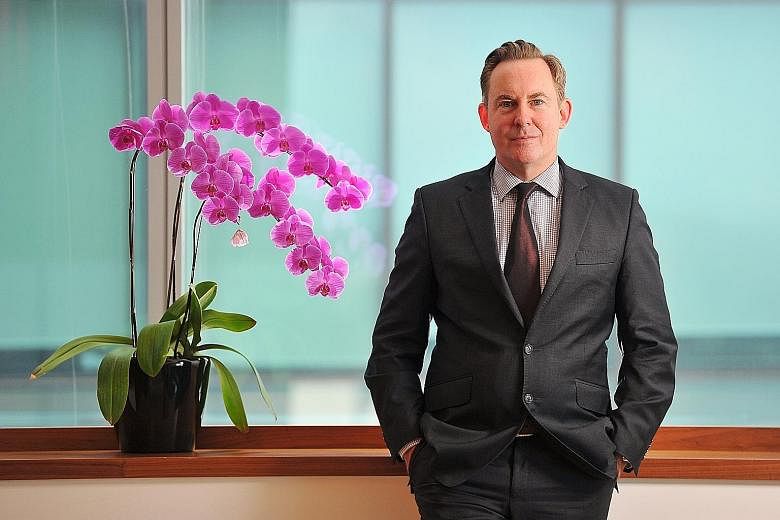Singapore and Hong Kong stand out as Asia's most attractive equity markets in which to seek good value and stability as the global bull cycle enters its last stages and volatility looms on the horizon.
Mr Benjamin Pedley, HSBC Private Bank's Asia head of investment strategy, was outlining market themes in the coming months for The Straits Times in an interview last week.
"In the later stages of the bull market, you want to be more conservative. Look for good valuation, look for stable earnings and look for dividend, which is a buffer against volatility and allows you to ride out the roller-coaster," he said.
"In South-east Asia, Singapore equities fit that bill. The market here is attractive because it's stable with relatively less volatility. From a dividend-yield perspective, it stands out from the region.''
With stability in mind, investors will do well to look at the banking plays here, he noted.
"We're looking for a stable environment, companies with good earnings and cash flow, able to pay sustainable dividend - the financial sector will meet those criteria."
In North-east Asia, H shares - Chinese companies listed in Hong Kong - also offer investors better value than the embattled, but still overpriced, mainland A shares.
"We're overweight on China, but we have a significant preference for H shares over A shares. To give you an idea of the gap, A shares are still trading at a premium of between 35 and 40 per cent to H shares," he said.
This is despite the recent crash that has left China's main index Shanghai Composite down about 30 per cent since mid-June as the market continues to deleverage following the margin-trading-fuelled rally that began last year.
Yesterday, Shanghai closed another 1.11 per cent lower amid fresh concerns over China's economic slowdown after the official Purchasing Managers' Index for July came in at a five-month low.
Mainland shares will likely be buffeted by volatility in the coming months, Mr Pedley cautioned, with prices gyrating as retail investors cash out over the government's market support measures.
"But HSBC Global Research is still forecasting that Shanghai Composite will end this year at around 4,000 points because of the stable yuan exchange rate and the country's interest rate, which is still relatively high. This gives the Chinese government the flexibility for further monetary easing."
Meanwhile, Mr Pedley noted that caution is necessary when approaching the US market, now in its seventh year of a bull cycle.
"This US bull market is the third- longest since 1940, and three years have passed since we've had a correction of over 10 per cent. The market is now fully valued, and we are underweight on US equities at the moment - it's difficult to see where the upside impetus will come from in the near term.
"We are more constructive on Europe, where monetary conditions are easy and will remain so due to the quantitative easing," he said, adding that European large caps are about 30 per cent cheaper than those in the US.
Aside from the expensive stock market, the US dollar may also weaken in the coming months after the eventual rate hike by the Federal Reserve, which Mr Pedley predicts will come in December.
"Historically, the first interest rate hike in a cycle is typically followed by currency weakness. The dollar typically falls in the months afterward... It's not a consensus view, but the dollar rally is in its death throes,'' he said.
Investors with a dollar-dominant portfolio should diversify their currency exposure, Mr Pedley said, and gold may be a good choice even though prices are languishing around a five-year low under the US$1,100 level.
"We're not saying gold will shoot up from these levels, but if we are right about the dollar decline, the price of gold may benefit from its historically inverse relationship with the dollar," he said.
"Couple that with the supply decline as gold production shutters, we think there's a support that can push gold prices back up to US$1,200 and potentially above as we head into 2016.''


